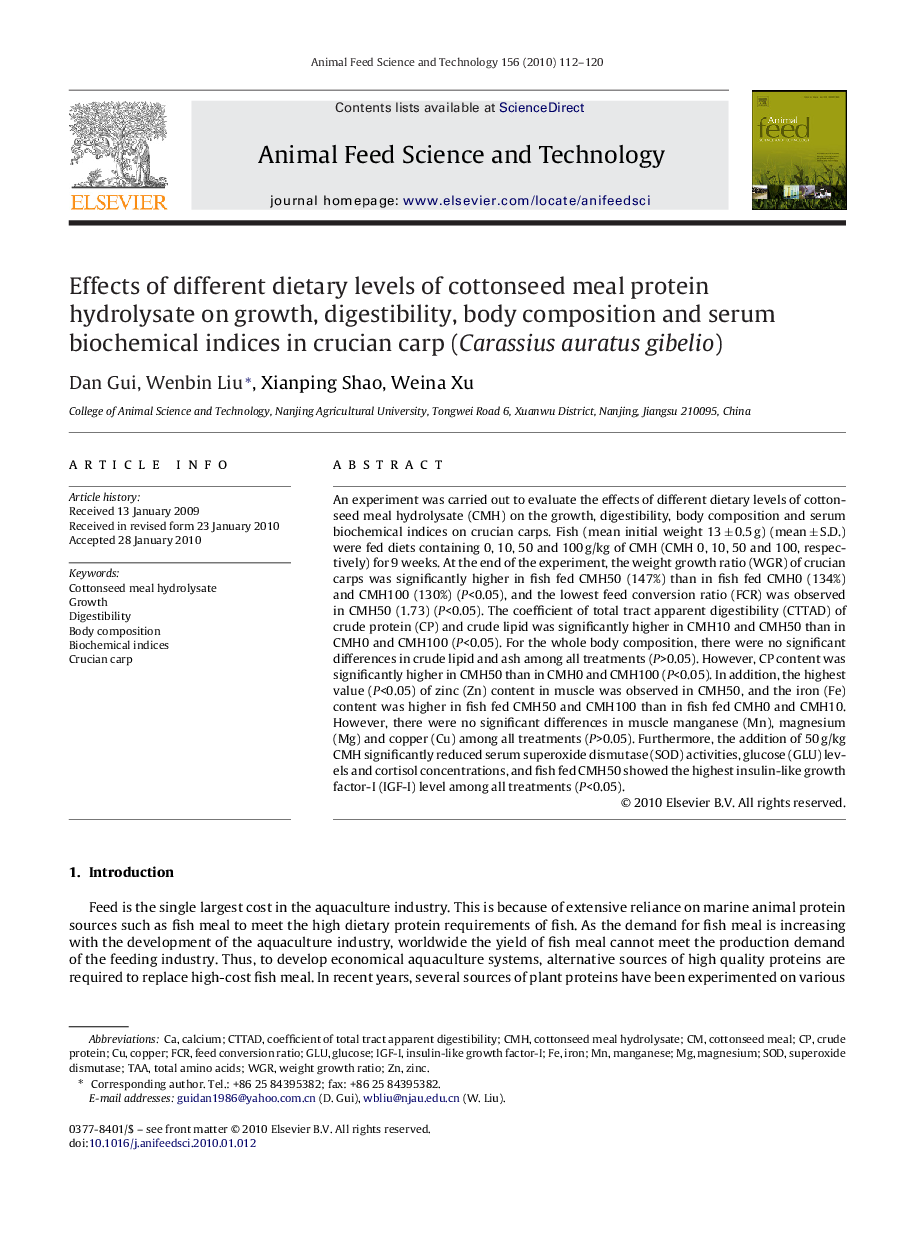| Article ID | Journal | Published Year | Pages | File Type |
|---|---|---|---|---|
| 2420139 | Animal Feed Science and Technology | 2010 | 9 Pages |
An experiment was carried out to evaluate the effects of different dietary levels of cottonseed meal hydrolysate (CMH) on the growth, digestibility, body composition and serum biochemical indices on crucian carps. Fish (mean initial weight 13 ± 0.5 g) (mean ± S.D.) were fed diets containing 0, 10, 50 and 100 g/kg of CMH (CMH 0, 10, 50 and 100, respectively) for 9 weeks. At the end of the experiment, the weight growth ratio (WGR) of crucian carps was significantly higher in fish fed CMH50 (147%) than in fish fed CMH0 (134%) and CMH100 (130%) (P<0.05), and the lowest feed conversion ratio (FCR) was observed in CMH50 (1.73) (P<0.05). The coefficient of total tract apparent digestibility (CTTAD) of crude protein (CP) and crude lipid was significantly higher in CMH10 and CMH50 than in CMH0 and CMH100 (P<0.05). For the whole body composition, there were no significant differences in crude lipid and ash among all treatments (P>0.05). However, CP content was significantly higher in CMH50 than in CMH0 and CMH100 (P<0.05). In addition, the highest value (P<0.05) of zinc (Zn) content in muscle was observed in CMH50, and the iron (Fe) content was higher in fish fed CMH50 and CMH100 than in fish fed CMH0 and CMH10. However, there were no significant differences in muscle manganese (Mn), magnesium (Mg) and copper (Cu) among all treatments (P>0.05). Furthermore, the addition of 50 g/kg CMH significantly reduced serum superoxide dismutase (SOD) activities, glucose (GLU) levels and cortisol concentrations, and fish fed CMH50 showed the highest insulin-like growth factor-I (IGF-I) level among all treatments (P<0.05).
